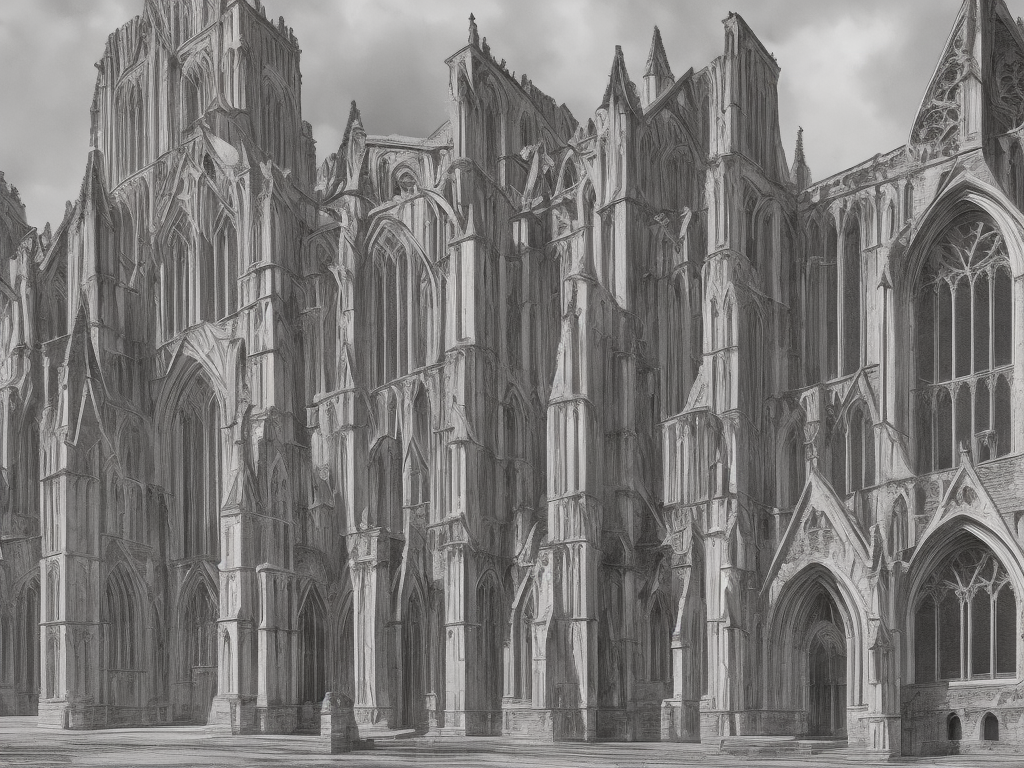
When it comes to religious buildings, there are a number of different kinds that exist. Among these, two of the most well-known are abbeys and cathedrals. While the two have some similarities, there are also several key differences between them that set them apart.
To begin with, let’s take a look at the definition of each type of building. An abbey is a monastery or convent that is headed by an abbot or abbess. The main purpose of an abbey is to provide a place for monks or nuns to live and worship, and they are typically located in more rural areas. A cathedral, on the other hand, is a church that serves as the seat of a bishop. It is located in the main city of the bishop’s diocese and is often the central site for religious events, such as ordinations, weddings, and funerals.
One of the primary differences between abbey and cathedral is their function and purpose. While both buildings are used for religious purposes, the way in which they are used and the people who use them are quite distinct. An abbey is a place where monks and nuns live a cloistered, monastic life, characterized by qualities such as contemplation, solitude, and silence. They spend their days in study, prayer, and manual labor, often producing goods such as cheese or wine. The purpose of an abbey is to provide a space for these people to follow their spiritual path and engage in religious practices to deepen their faith.
A cathedral, however, has a much different purpose. As the seat of a bishop, it is the hub of a diocese and serves as the place where many important religious events take place. Unlike an abbey, a cathedral is much larger, often able to accommodate thousands of people at once. It is frequented not only by clergy but also by regular people, who come to attend mass, receive the sacraments, or participate in other important religious occasions such as weddings or baptisms. The cathedral, therefore, is a much more public space that is open to a wider range of people than an abbey.
Another key difference between abbey and cathedral is their architecture and design. Because they have different functions, their buildings are constructed in different styles and with different features. Abbeys tend to have a much simpler design, often made of stone and featuring a plain facade. This is because the focus of the building is on the interior space, where the monks or nuns spend most of their time in quiet contemplation. Often, abbey architecture is characterized by elements such as cloisters, which are covered walkways that surround a garden or courtyard and are used for meditation or reflection.
Cathedrals, on the other hand, tend to be much more ornate and elaborate in design. This is because they serve a public function and are intended to inspire awe and reverence in those who visit them. Cathedrals are often much larger than abbeys, featuring tall spires, stained glass windows, and intricate decorations such as carvings or frescoes. They may also have elaborate chapels or altars, which are used to conduct the many religious ceremonies that take place there.
Finally, a major difference between abbey and cathedral is their historical context. Abbeys have been around for much longer than cathedrals, with some dating back to the early Middle Ages. They are often associated with the monastic reform movements of the 11th and 12th centuries, when several orders of monks or nuns were founded that sought to reform the church from within.
Cathedrals, by contrast, were largely a product of the Gothic period, which began in the 12th century and lasted through the 16th. During this time, there was a renewed interest in building grand churches that reflected the glory of God. These cathedrals were often sponsored by wealthy benefactors, such as the monarchs of Europe, who saw them as a way to demonstrate their power and influence.
In conclusion, while abbey and cathedral are both religious buildings, there are a number of key differences between them that set them apart. Abbots and abbesses lead abbeys and they are generally located in rural areas and serve as a space for monks or nuns to live a cloistered, monastic life. Cathedrals are headed by bishops and are located in larger, urban areas, serving as the central hub of a diocese and as a place for the public to attend religious events. Their designs are also distinct, with abbeys featuring simple, functional architecture and cathedrals being much more ornate and grandiose. Understanding these differences between abbey and cathedral is important for appreciating the significance of these two distinct religious structures.
 Self-Instruct
Self-Instruct